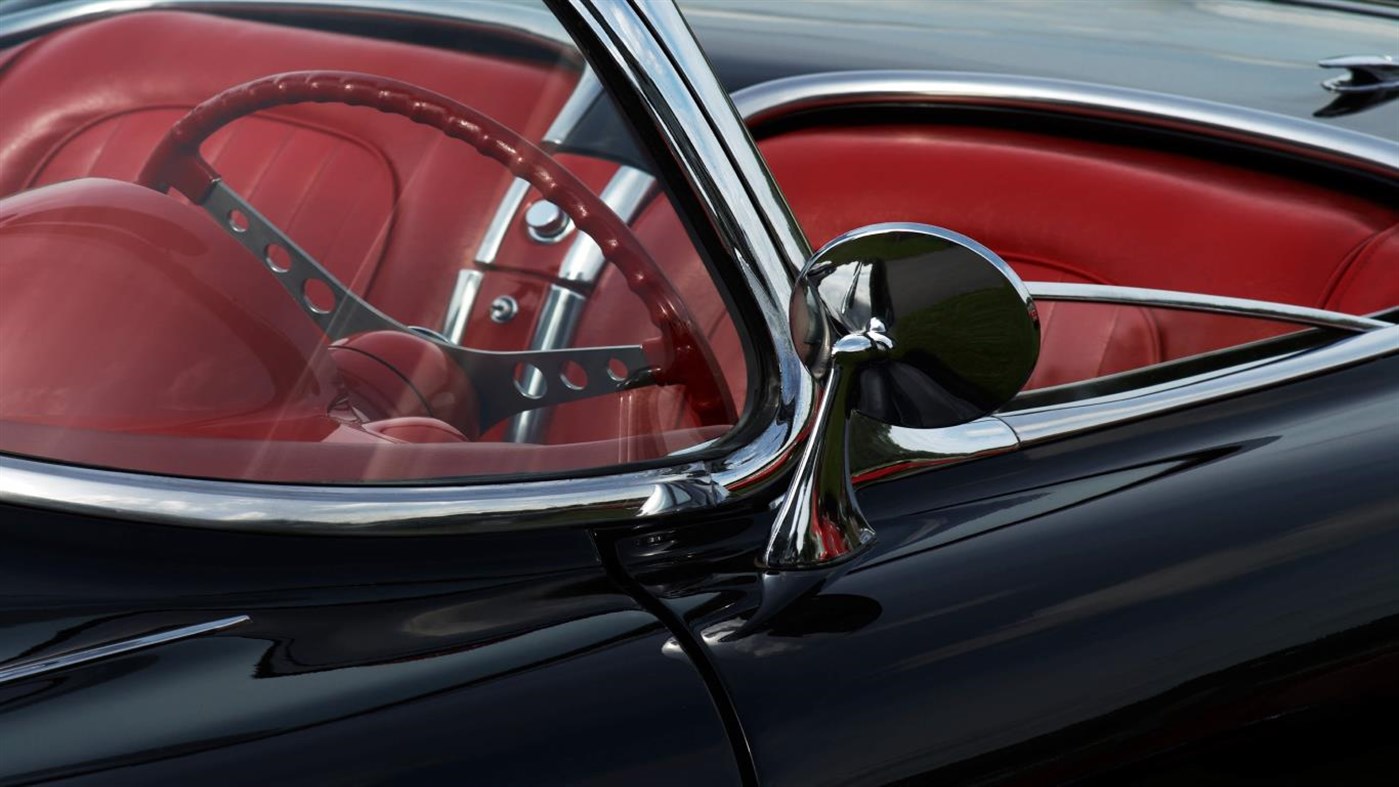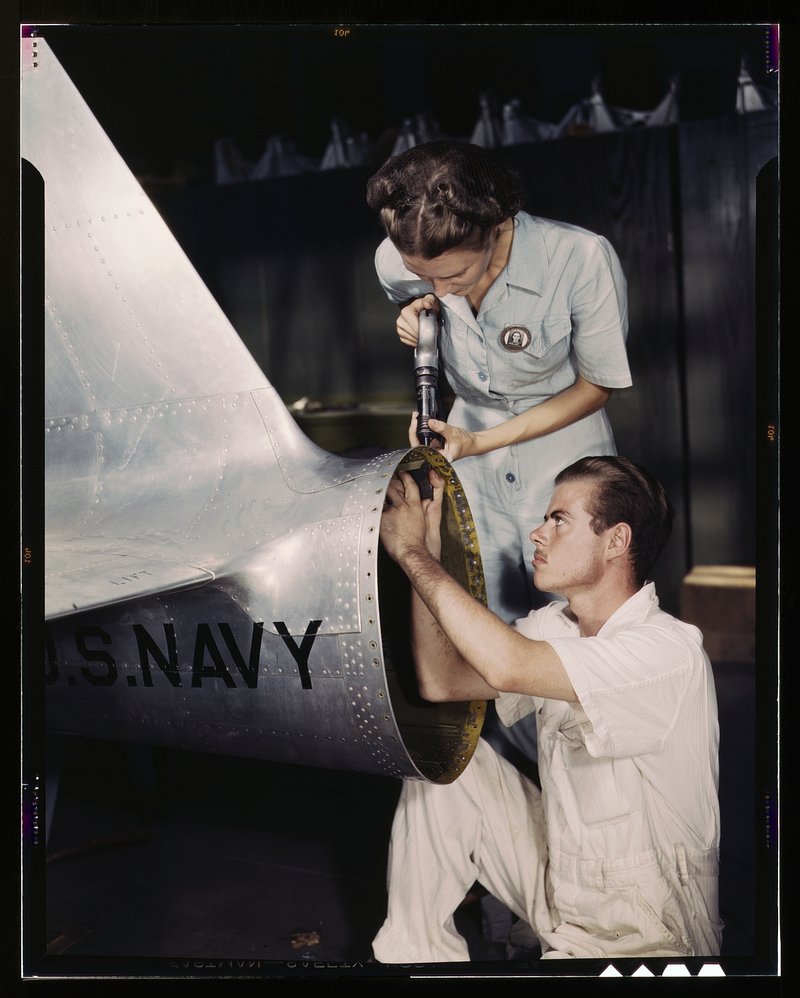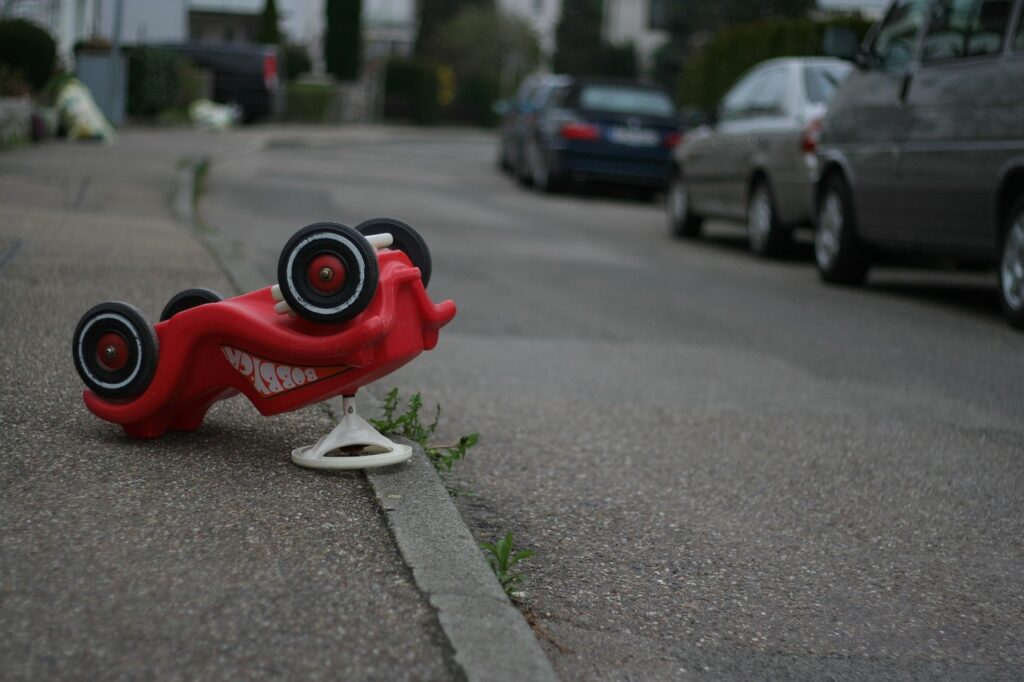
In the sprawling tapestry of automotive history, where countless vehicles are born and eventually fade, a select few achieve an almost mythical status. These aren’t the gleaming showpieces or futuristic concepts; they are real machines, often mundane in their original design, that were thrust into the spotlight by association with monumental events. These cars served as silent witnesses or unwilling participants in some of humanity’s most dramatic, and often tragic, chapters.
From the getaway cars of notorious criminals to the final conveyances of royalty and rock legends, these vehicles have become more than just modes of transportation. They are tangible links to power, ambition, violence, and profound loss, their very existence intertwined with the compelling narratives of their occupants. Each dent, bullet hole, or faded interior tells a story, offering a unique lens through which to view history.
Join us as we explore twelve of the most infamous automobiles ever to roll off an assembly line. These machines defy the typical trajectory of a car’s life, surviving in public memory long after their contemporaries have been recycled. Prepare to delve into the fascinating, often chilling, stories behind these extraordinary vehicles that prove a car can indeed become an icon, a symbol, and a permanent part of our collective imagination.
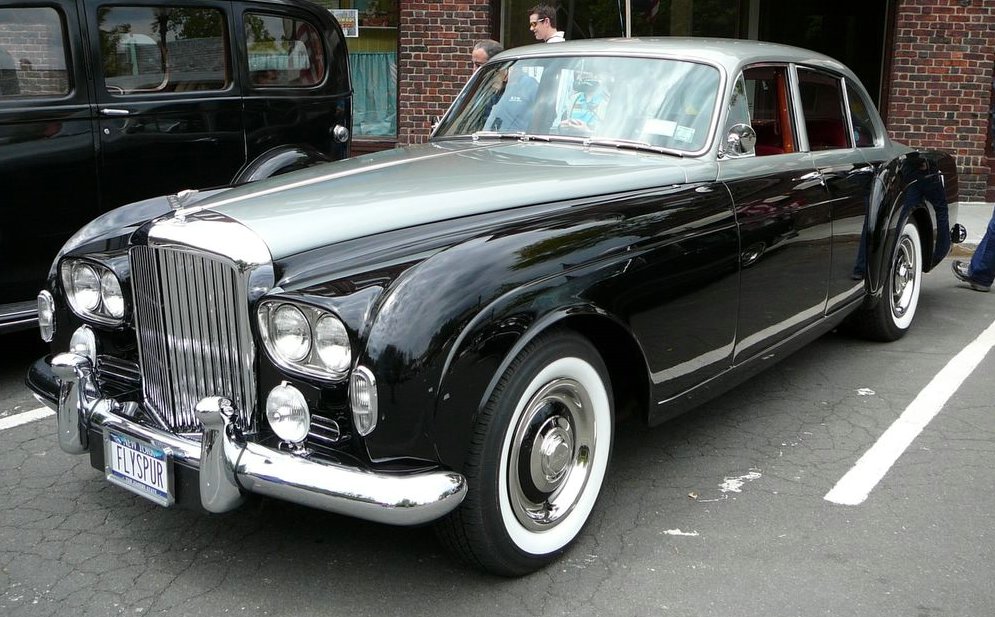
1. **“Blue Lena” S3 Bentley Continental Flying Spur**Keith Richards’s S3 Bentley Continental Flying Spur, affectionately dubbed “Blue Lena,” was emblematic of his wild rock ‘n’ roll lifestyle. As Richards recounted in *Life*, it was “a car meant to be driven fast at night,” perfectly suiting the adventures of a Rolling Stone. Beyond its luxurious facade, Blue Lena held a secret: “It had a secret compartment in the chassis where the band stashed drugs,” highlighting the illicit excesses and legal risks that defined Richards’s early fame, especially facing drug possession charges in 1967.
This Bentley became the unwitting catalyst for a dangerous Moroccan odyssey that profoundly altered lives. While awaiting trial, Richards, Brian Jones, and Anita Pallenberg embarked on a road trip. However, the journey descended into turmoil as Richards discovered Jones’s savage abuse of Anita. After a violent incident in Marrakech, Keith and Anita made a desperate escape in Blue Lena, leaving a drug-fueled Brian behind.
Their flight through Spain led to a new relationship forming in the car’s backseat, a scandalous turning point. While Keith and Anita’s romance deepened, Brian Jones, enraged by what he saw as “betrayal” and facing his own drug charges, spiraled into chaos. He was subsequently fired from the band and tragically found dead in his swimming pool the following year. Blue Lena thus remains intrinsically linked to a passionate, illicit romance and the devastating fracturing of one of rock’s most iconic bands.
Car Model Information: 2022 Buick Envision FWD Avenir
Name: Bentley Flying Spur
Manufacturer: Bentley Motors
Production: November 2005 – present
ModelYears: 2006–present
Assembly: Crewe
Class: Full-size,luxury car
BodyStyle: vehicle door,Sedan (automobile)#Notchback sedans
Layout: F4 layout
Sp: uk
Categories: 2000s cars, 2010s cars, 2020s cars, All-wheel-drive vehicles, All Wikipedia articles written in British English
Summary: The Bentley Flying Spur, known as the Bentley Continental Flying Spur before 2013, is a full-sized luxury car produced by Bentley Motors Limited since 2005. It is the four-door saloon variant of the Bentley Continental GT two-door coupé.
The Flying Spur is assembled by hand at Bentley’s factory in Crewe, England. Briefly, due to lack of capacity at the Crewe factory upon the car’s introduction, 1,358 units of the first generation Flying Spur destined for markets other than the United States and United Kingdom were built at parent-company Volkswagen’s Transparent Factory in Dresden, Germany. This arrangement ended in early 2007, when all assembly works reverted to Crewe.
Get more information about: Bentley Flying Spur (2005)
Buying a high-performing used car >>>
Brand: Bentley Model: Continental Flying Spur
Price: $30,988 Mileage: 11,648 mi.

2. **1993 Ford Bronco**Few vehicles are as instantly recognizable as the white 1993 Ford Bronco linked to O.J. Simpson on June 17, 1994. Accused of double murder, the former NFL star shockingly fled authorities, initiating a low-speed chase that captivated an entire nation. Major networks interrupted primetime, broadcasting live as “95 million viewers tuned in” to witness the surreal pursuit. This event instantly transformed the Bronco into an emblem of media sensationalism.
The spectacle involved “20 police cars and 20 helicopters” tailing the Bronco at a mere 35 mph through affluent Orange County. Simpson, reportedly threatening self-harm, eventually pulled into his driveway. This peculiar resolution set the stage for the “Trial of the Century,” a media circus that overshadowed the victims. The “24-7 news coverage” became an early, powerful precursor to modern “Reality TV.”
Despite a “mountain of evidence,” Simpson’s controversial acquittal in the criminal trial, followed by a civil liability finding and later imprisonment for other crimes, kept the Bronco in the public eye. The white Ford Bronco remains the definitive symbol of this “theater of the absurd,” its image etched into collective memory. Its subsequent life, including lawsuits and rentals, ensures its unique and bizarre legacy endures in American pop culture.
Car Model Information: 2021 Ford Bronco Outer Banks
Name: Ford Bronco
Caption: 2021 Ford Bronco Outer Banks (4-door)
Manufacturer: Ford Motor Company
Production: 1965–1996,2021–present
Class: Compact SUV
Layout: Front-engine, four-wheel-drive
BodyStyle: SUV
Successor: Ford Expedition
ModelYears: 1966–1996,2021–present
Categories: 1970s cars, 1980s cars, 1990s cars, 2020s cars, All-wheel-drive vehicles
Summary: The Ford Bronco is a model line of SUVs manufactured and marketed by Ford. The first SUV model developed by the company, five generations of the Bronco were sold from the 1966 to 1996 model years. A sixth generation of the model line was introduced for the 2021 model year. The nameplate has been used on other Ford SUVs, namely the 1984–1990 Bronco II compact SUV, the 2021 Bronco Sport compact crossover, and the China-only 2025 Bronco New Energy.
Originally developed as a compact off-road vehicle using its own chassis, the Bronco initially competed against the Jeep CJ-5 and International Scout. For 1978, Ford enlarged the Bronco, making it a short-wheelbase version of the F-Series pickup truck; the full-size Bronco now competed against the Chevrolet K5 Blazer and Dodge Ramcharger.
Following a decline in demand for large two-door SUVs, Ford discontinued the Bronco after the 1996 model year, replacing it with the four-door Ford Expedition; followed by the larger Ford Excursion. After a 25-year hiatus, the sixth-generation Bronco was reintroduced in 2021 as a mid-size two-door SUV. It is also offered as a full-size four-door SUV with a 16 in (41 cm) longer wheelbase. It competes directly with the Jeep Wrangler as both a two-door and a four-door (hardtop) convertible.
From 1965 to 1996, the Ford Bronco was manufactured by Ford at its Michigan Truck Plant in Wayne, Michigan, where it also manufactures the sixth-generation version.
Get more information about: Ford Bronco
Buying a high-performing used car >>>
Brand: Ford Model: Bronco
Price: $27,999 Mileage: 78,126 mi.
Read more about: The Unwanted Legacy: 14 Classic Sedans and Muscle Cars Younger Buyers Are Steering Clear Of

3. **1928 Cadillac V-8 Town Sedan**Al Capone, the ruthless boss of Prohibition-era Chicago, needed a vehicle that projected his power and offered uncompromising security. His 1928 Cadillac V-8 Town Sedan was precisely that: “flashy, fast and armored,” perfectly embodying his opulent yet dangerous persona. This car became a silent participant in Capone’s reign of terror, a tangible representation of his grip on the city.
Capone’s era was defined by brutal acts like the 1929 “Saint Valentine’s Day Massacre,” where seven rival gang members were executed “at close range.” This formidable Cadillac often transported Capone or his crew, solidifying its link to his ruthless control. To counter constant threats, Capone fortified his Cadillac with “inch-thick bulletproof glass and 3,000 pounds of steel armor plating,” creating an impervious mobile fortress.
Ingeniously, the car also featured an “authentic police siren and what is believed to have been the first police band receiver,” enabling Capone to evade or even mimic law enforcement. In a remarkable twist, after Capone’s 1931 conviction, his seized Cadillac was “used by FDR following the bombing of Pearl Harbor” for presidential transport. The legend of Capone’s Cadillac persists, with verified identical vehicles confirming its iconic status in organized crime history.
Car Model Information: 2022 Buick Envision FWD Avenir
Name: Cadillac Fleetwood
Caption: 1994 Cadillac Fleetwood
Manufacturer: General Motors
Production: 1976–1996
ModelYears: 1977–1996
Class: Full-size,luxury car
Layout: Front-engine, front-wheel-drive layout
Successor: Cadillac CT6
Categories: 1940s cars, 1950s cars, 1960s cars, 1970s cars, 1980s cars
Summary: The Cadillac Fleetwood is a full-size luxury sedan that was marketed by Cadillac from the 1977 through 1996 model years. Taking its nameplate from a coachbuilder historically associated with the General Motors division, the Cadillac Fleetwood became a stand-alone model line in 1985.
The first-generation Cadillac Fleetwood was introduced for 1985 as the division downsized its full-size C-body platform sedans to a front-wheel-drive layout. Slotted between the Sedan deVille and the Sixty Special, the Fleetwood also bridged the gap between the deVille and the D-body Fleetwood Brougham (Cadillac Brougham for 1987–1992). The second generation was introduced for 1993, replacing the Brougham as the D-body Cadillac sedan (the Fleetwood Brougham name became a trim option).
After the 1996 model year, Cadillac discontinued the Fleetwood line as GM ended production of full-size sedan lines in North America. General Motors consolidated Cadillac’s large sedan lines into the deVille series and later as the Cadillac DTS. Since 1996, the only longer-wheelbase sedans produced by the division have been the Cadillac CT6 and Cadillac Celestiq.
Get more information about: Cadillac Fleetwood
Buying a high-performing used car >>>
Brand: Cadillac Model: V-8 Town Sedan
Price: $30,988 Mileage: 11,648 mi.
Read more about: The Unbridled Twelve: 1970s Muscle Cars That Still Reign Supreme for Today’s True Enthusiasts

4. **1996 BMW 750il Sedan**Tupac Shakur, a profoundly influential West Coast rapper, used his music to address “racism, poverty, violence and the treatment of women in society.” Despite his positive lyrical messages, Shakur’s life was tragically plagued by violence. This contradiction culminated in his fatal shooting on September 7, 1996, in Las Vegas, inside a 1996 BMW 750il Sedan.
The night began after a Mike Tyson boxing match, with Tupac and his entourage assaulting an alleged Crips gang member, Orlando “Baby Lane” Anderson, at the MGM Grande. This act of street retaliation highlighted the dangerous environment surrounding the rapper. Following the altercation, Tupac was a passenger in Death Row Records CEO Suge Knight’s BMW, en route to Club 662.
At a red light on Flamingo Road, Tupac, briefly standing through the sunroof, became a visible target. Around 11:15 PM, a white Cadillac pulled alongside the BMW, and its occupants “opened fire on Shakur and the sedan.” Tupac was hit “4 times by gunfire,” and Knight was also wounded. Shakur succumbed to internal bleeding on September 13, 1996. The identity of his attackers remains a haunting mystery, ensuring the BMW 750il remains a grim artifact in the tragic lore of Tupac Shakur’s unsolved murder.
Car Model Information: 2022 Buick Envision FWD Avenir
Name: BMW 7 Series
Caption: BMW 7 Series (G11)
Manufacturer: BMW
Production: 1977–present
Class: Full-size car,luxury car
BodyStyle: sedan (car)
Predecessor: BMW New Six
Categories: All articles with dead external links, Articles with dead external links from July 2021, Articles with short description, BMW vehicle series, CS1 Chinese-language sources (zh)
Summary: The BMW 7 Series is a full-size luxury sedan manufactured and marketed by the German automaker BMW since 1977. It is the successor to the BMW E3 “New Six” sedan and is now in its seventh generation.
The 7 Series is BMW’s flagship car and is only available in a sedan bodystyle (including long wheelbase and limousine models). It traditionally introduces technologies and exterior design themes before other models in BMW’s lineup.
The first generation of the 7 Series was powered by straight-6 petrol engines, and following generations have been powered by inline-4, straight-6, V8 and V12 engines with both natural aspiration and turbocharging. Since 1995, diesel engines have been optional in the 7 Series.
Unlike the BMW 3 Series and BMW 5 Series sedans, BMW does not offer a full M model, but once offered an M performance variant, the BMW M760 with its 6.6L V12 (at the time the most powerful BMW ever made, not to be confused with BMW 760 6.6 V12 which does not offer the same performance). The Alpina B7 served as the high-performance variant of the 7 Series.
Get more information about: BMW 7 Series
Buying a high-performing used car >>>
Brand: BMW Model: 750il Sedan
Price: $30,988 Mileage: 11,648 mi.
Read more about: Unleash Your Inner Driver: 13 Simple, Fun, and Affordable Cars That Are Perfect Daily Drivers

5. **Mercedes Grosser 770 / 770K Limousine**Adolf Hitler, the architect of unspeakable horrors, plunged the world into war and genocide, including the murder of “6 million Jews in the Holocaust.” His rise to power necessitated extreme security measures, as he faced “over 40 assassination attempts by Germans.” His formidable fleet of “seven armored limousines,” primarily the Mercedes Grosser 770 and 770K, were essential for his survival.
These were not standard cars but bespoke machines, “designed specifically for Hitler and his staff” to provide maximum protection. They were “completely armored and bullet-proof,” with some 770K models weighing up to “five tons.” Despite this immense weight, their “225 horsepower engine” allowed speeds of “93.2 mph,” a testament to their formidable engineering.
Further security features included a “rotational armored plate in the back that could be raised to protect passengers” and “secret compartments to store extra pistols.” Such extreme modifications led to poor fuel efficiency, reportedly “three miles to the gallon.” Today, relics like the 1945 Mercedes Grosser 770 in the Canadian War Museum, and other 770K models owned by collectors, serve as chilling, tangible reminders of a dark, destructive chapter in human history.
Car Model Information: 2022 Buick Envision FWD Avenir
Caption: 1943 Mercedes-Benz 770 (W150)
Name: Mercedes-Benz 770
Aka: Mercedes-Benz W07/W150,Großer
Manufacturer: Mercedes-Benz
Class: Ultra-luxury car,Limousine
Production: 1930–1944,205 produced
BodyStyle: Sedan (automobile),Touring car
Successor: Mercedes-Benz W186
Predecessor: Mercedes 24/100/140 PS
Layout: Front-engine, rear-wheel-drive layout
Assembly: Untertürkheim
Engine: Straight-eight engine,7,665 cc M150 I8 (1938–1944)
Wheelbase: W07 (1930–1938): {{convert,3750,mm,in,abbr=on
Abbr: on
Width: W07 (1930–1938): {{convert,1850,mm,abbr=on
Length: W07 (1930–1938): {{convert,5600-5700,mm,abbr=on
Height: W07 (1930–1938): {{convert,1800-1830,mm,abbr=on
Categories: 1930s cars, 1940s cars, All articles with unsourced statements, Articles with short description, Articles with unsourced statements from February 2020
Summary: The Mercedes-Benz 770, also known as the Großer Mercedes (German for “Large Mercedes”), was an ultra luxury car built by Mercedes-Benz from 1930 until 1944. The second model (W150) is best known from its use by high-ranking officials of Nazi Germany and their allies before and during World War II, including Adolf Hitler, Hermann Göring, Heinrich Himmler, Reinhard Heydrich, Ion Antonescu, Gustaf Mannerheim, and Benito Mussolini, many of which were captured in archival footage.
Get more information about: Mercedes-Benz 770
Buying a high-performing used car >>>
Brand: Mercedes Model: Grosser 770 / 770K
Price: $30,988 Mileage: 11,648 mi.

6. **1934 Ford Model 730 Deluxe Sedan**Bonnie Parker and Clyde Barrow, the infamous Depression-era criminal duo, terrorized the Midwest with “brazen robberies and murders.” Responsible for “at least 10 murders,” their getaway vehicle, a 1934 Ford Model 730 Deluxe Sedan, became as notorious as they were. This powerful Ford V-8 was crucial for their “two-year, 2,500-mile crime spree,” enabling them to evade law enforcement.
Clyde Barrow’s appreciation for Ford V-8s was well-known; he even praised the car’s speed to Henry Ford. The 1934 Model 730 Deluxe Sedan provided the Barrow Gang with the necessary performance to outrun the slower police vehicles of the era, making it indispensable in their continuous evasion of justice across multiple states.
The duo’s luck, and the Ford’s incredible run, ended on May 23, 1934. In a meticulously planned ambush in rural Louisiana, “four law officers” intercepted the sedan. As the car slowed, the lawmen “emptied all their rounds into the car.” The intense volley of shotgun and pistol fire ensured no escape, leaving the vehicle “sprayed with more than 100 rounds.”
The scene was one of horrific violence. Clyde “died almost instantly,” but Bonnie’s screams were heard as the car crashed, officers continuing to fire until both were “shot over 25 times each.” The bullet-riddled Ford became a macabre attraction, drawing spectators who collected gruesome “souvenirs.” Preserved at Whiskey Pete’s Casino, this Ford Model 730 Deluxe Sedan stands as a chilling relic of America’s most famous outlaw couple and their violent end.
Car Model Information: 2022 Buick Envision FWD Avenir
Categories: All Wikipedia articles in need of updating, All articles with dead external links, All articles with unsourced statements, Articles with dead external links from March 2024, Articles with obsolete information from December 2012
Summary: Since the introduction of the Benz Patent Motorwagen in 1886, some passenger cars and light trucks can claim to being the highest selling vehicles in the automobile markets.
While references to verify the manufacturers’ claims have been included, there is always the possibility of inaccuracy or hyperbole. A single vehicle can be sold concurrently under several nameplates in different markets, as with for example the Nissan Sunny; in such circumstances manufacturers often provide only cumulative units sold figures for all models. As a result, there is no definitive standard for measuring units sold; Chrysler minivans has sold over 16 million worldwide, while Volkswagen has claimed its Beetle is the best-selling car in history, as it did not substantially change throughout its production run. By contrast, Toyota has applied the Corolla nameplate to 12 generations since 1966, which have sold over 50 million through 2021.
Get more information about: List of best-selling automobiles
Buying a high-performing used car >>>
Brand: Ford Model: Model 730 Deluxe Sedan
Price: $30,988 Mileage: 11,648 mi.
Read more about: Beyond the Daily Grind: 14 Classic Convertibles That Charm, But Don’t Commute for the Younger Crowd
7. **Rover P6 3500**From the glittering lights of Hollywood to the serene elegance of European royalty, Grace Kelly captivated the world with her grace and poise. After a meteoric rise as an Academy Award-winning actress, she embraced a new chapter, marrying Rainier III, Prince of Monaco. This transition saw her step away from the silver screen, dedicating her considerable talents to humanitarian causes, notably founding the non-profit AMADE, which championed the well-being of children globally.
Yet, even for royalty, fate can deliver unexpected, devastating blows. In 1982, while driving her Rover P6 3500, Princess Grace suffered a sudden, severe stroke. The vehicle, an emblem of her everyday life, veered catastrophically, careening down a perilous mountainside. Her daughter, Princess Stéphanie, was also in the car and, against all odds, survived the horrific crash, albeit with serious injuries.
Tragically, Princess Grace Kelly succumbed to her injuries the following day, plunging Monaco and the world into mourning. Her funeral was a global event, attended by international dignitaries and her former Hollywood peers. Actor James Stewart, in a poignant eulogy, encapsulated the profound loss, describing her as a “soft, warm light” that brightened every life she touched. Her Rover P6 3500, a seemingly ordinary car, thus became a somber footnote in the story of a woman whose life, though cut short, left an enduring legacy of elegance and compassion.
Read more about: Unpacking the Legacy: 11 Groundbreaking Hatchbacks That Defined Automotive Innovation
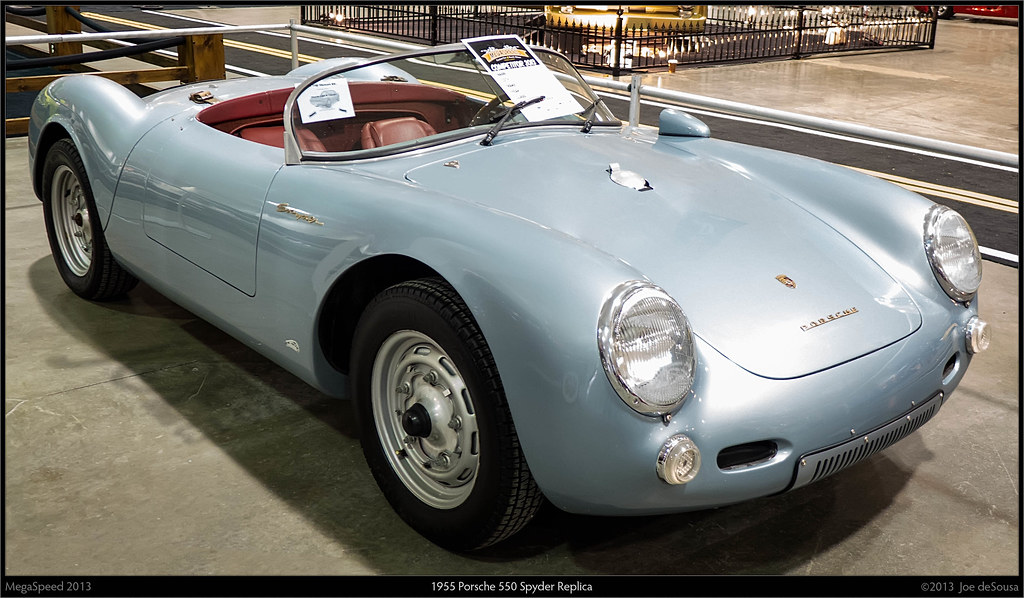
8. **1955 Porsche 550 Spyder**James Dean was more than just an actor; he was a cultural phenomenon, a young man on an undeniable trajectory to cinematic legend. With only three films to his name, he had already cemented his status as the voice of a generation, embodying raw talent and magnetic charisma. The world lay at his feet, promising an almost limitless future for the enigmatic star, whose unique intensity resonated with audiences worldwide.
However, this dazzling story was tragically brief. On September 30, 1955, Dean’s life was abruptly cut short when his custom-built 1955 Porsche 550 Spyder, a sleek and formidable machine he affectionately called “Little Bastard,” was involved in a devastating head-on collision. The accident, caused by a reckless driver, claimed the life of the 24-year-old actor, instantly transforming him from a rising star into an immortalized legend.
The Porsche 550 Spyder itself was a marvel of mid-century German engineering, a lightweight racing car designed for speed and agility. Its minimalist design and powerful engine made it a desirable vehicle for performance enthusiasts. For Dean, it represented the thrill and rebellious spirit that defined his public persona. Yet, it also became the instrument of his tragic end, forever linking the car’s advanced design with the untimely demise of a Hollywood icon.
Following the fatal crash, the wrecked Porsche gained a macabre reputation, steeped in urban legend and superstition. It briefly went on display as a stark reminder of the tragedy, before eventually finding a place in the Tragedy in US History Museum in St. Augustine, Florida. The Spyder, meticulously engineered for performance, stands as a grim testament to a life extinguished too soon, its twisted metal a haunting relic of cinematic history.
Car Model Information: 2022 Buick Envision FWD Avenir
Manufacturer: Porsche
Production: 1953–1956,90 produced
Designer: Erwin Komenda
Class: Sports car
Assembly: Stuttgart
Layout: RMR layout
Engine: flat four engine
Transmission: Manual transmission
Wheelbase: 2,100 mm (82.7 in)
Length: 3,600 mm (141.7 in)
Width: 1,610 mm (63.4 in)
Height: 980 mm (38.6 in)
Weight: approximately 550 kg (1,212 lbs)
Successor: Porsche 718
BodyStyle: coupé
Categories: 1957 Formula One season cars, 1958 Formula One season cars, 24 Hours of Le Mans race cars, All articles needing additional references, Articles needing additional references from July 2007
Summary: The Porsche 550 is a racing sports car produced by Porsche from 1953 until 1956. In that time only 90 Porsche 550s were produced, and they quickly established dominance in the 1.1- and 1.5- liter classes. The Porsche 550 is a mid-engine car with an air-cooled four-cylinder engine, following the precedent of the 1948 Porsche 356/1 prototype designed by Ferry Porsche. The mid-engine racing design was further developed with Porsche’s 718 model; its advantages led to it becoming the dominant design for top-level racing cars by the mid-1960s.
The Porsche 550 has a solid racing history; it won the Nürburgring Eifel Race in May 1953, the first race it entered. The 550 Spyder usually finished in the top three in its class. Each Spyder was designed and customized to be raced.
A 1958 Porsche 550A Spyder sold at auction in 2018 by Bonhams for $5,170,000 (£4,115,763); it was the highest price for a 550 at auction.
Get more information about: Porsche 550
Buying a high-performing used car >>>
Brand: Porsche Model: 550 Spyder
Price: $30,988 Mileage: 11,648 mi.
Read more about: Beyond the Laughs: A Connoisseur’s Journey Through Jerry Seinfeld’s Exclusive Collection of Iconic Porsches

9. **1994 Mercedes-Benz S280**Princess Diana, affectionately known as the “People’s Princess,” revolutionized the British monarchy with her vibrant personality, inherent beauty, and profound compassion. She breathed fresh air into a royal lineage that many perceived as increasingly out of touch, connecting with the public through her unassuming nature and genuine dedication to humanitarian causes, from advocating against landmines to supporting AIDS research globally.
Despite her immense popularity and unwavering public adoration, Diana faced relentless scrutiny, particularly from the unmerciful British media, renowned for its savage and often sensationalized reporting. This constant barrage of lurid affairs and hateful gossip, alongside her tumultuous and ultimately dissolved marriage to Prince Charles, created an almost unbearable pressure cooker of public life. It was this intense media pursuit that set the stage for the tragic events that unfolded on a fateful night in Paris.
On August 31, 1997, while attempting to escape a pack of aggressive paparazzi in the heart of the Parisian night, Diana’s 1994 Mercedes-Benz S280, driven by Henri Paul and carrying her friend Dodi Fayed, was involved in a high-speed chase that ended in a catastrophic crash. The vehicle, a symbol of German automotive excellence, was transformed into an instrument of profound loss, claiming the lives of all three occupants and sending shockwaves across the globe.
The ensuing inquiries and investigations into the accident fueled numerous conspiracy theories, some blaming the Royal Family, others pointing to the paparazzi for purposefully instigating the crash. While definitive answers remain elusive, the Mercedes-Benz S280 became inextricably linked to a tragedy that underscored the perilous intersection of celebrity, royalty, and an insatiable media. Her legacy, however, continues to inspire through her sons, Princes William and Harry, who carry forward her work and embody the positive identity she sought to infuse into the Windsor family.

10. **1961 Lincoln Continental SS-100-X**When John Fitzgerald Kennedy ascended to the presidency in 1961, he heralded a new era of hope for the United States. Young, charismatic, and imbued with progressive ideals, “Jack” symbolized a “New Frontier” of unlimited possibilities, captivating a nation with his vision. Alongside his glamorous wife Jacqueline and their young children, the Kennedys embodied an idealized image of a dynamic America, fostering what many remembered as “Camelot” on Capital Hill.
Beyond his captivating image, JFK was a president of action, driving significant initiatives like the Civil Rights Act of 1964 and successfully navigating the perilous Cuban Missile Crisis. He inspired the nation to look skyward, charting a course for manned space flights that would eventually lead to a man on the moon. Yet, this promising trajectory was violently interrupted on a cold and bleak November 22, 1963, a day that forever scarred the American psyche.
As his 1961 Lincoln Continental SS-100-X limousine, code-named SS-100-X, made its way through the streets of Dallas, Texas, President Kennedy was tragically shot twice by a sniper. In a desperate scramble, Jacqueline Kennedy bravely attempted to aid her husband, while a Secret Service agent valiantly leapt onto the speeding car’s back. The assailant, former U.S. Marine Lee Harvey Oswald, a communist sympathizer and one-time Soviet spy, had murdered the nation’s young leader.
The vehicle itself, modified by Ford’s Advanced Vehicles Group to meet Secret Service specifications, held a grim irony: despite approximately $200,000 worth of work, not one part of the car was made bulletproof. The assassination cast a pall of shock and mourning across the nation, setting a tone for a confusing and restless era. The Lincoln, an unwitting participant in one of modern U.S. history’s greatest tragedies, remained in government service, albeit no longer a convertible and finally equipped with bulletproofing, a stark and permanent reminder of a presidency tragically cut short and a nation irrevocably changed.
Car Model Information: 2018 Lincoln Continental Reserve
Name: Lincoln Continental
Caption: 2019 Lincoln Continental
Manufacturer: Lincoln Motor Company
Production: 1939–1942,1946–1948,1956–2002,2016–2020
ModelYears: 1940–1942,1946–1948,1958–1980,1982–2002,2017–2020
Class: Full-size car,luxury car
Layout: Longitudinal engine,Front-engine, rear-wheel-drive layout
Categories: 1930s cars, 1940s cars, 1950s cars, 1960s cars, 1970s cars
Summary: The Lincoln Continental is a series of mid-sized and full-sized luxury cars produced between 1939 and 2020 by Lincoln, a division of the American automaker Ford. The model line was introduced following the construction of a personal vehicle for Edsel Ford, who commissioned a coachbuilt 1939 Lincoln-Zephyr convertible, developed as a vacation vehicle to attract potential Lincoln buyers. In what would give the model line its name, the exterior was designed with European “continental” styling elements, including a rear-mounted spare tire.
In production for over 55 years across nine different decades, Lincoln has produced ten generations of the Continental. Within the Lincoln model line, the Continental has served several roles ranging from its flagship to its base-trim sedan. From 1961 to 1976, Lincoln sold the Continental as its exclusive model line. The model line has also gone on hiatus three times. From 1949 to 1955, the nameplate was briefly retired. In 1981, the Continental was renamed the Lincoln Town Car to accommodate the 1982 seventh-generation Continental. After 2002, the Continental was retired, largely replaced by the Lincoln MKS in 2009; in 2017, the tenth-generation Continental replaced the MKS.
As part of its entry into full-scale production, the first-generation Continental was the progenitor of an entirely new automotive segment, the personal luxury car. Following World War II, the segment evolved into coupes and convertibles larger than sports cars and grand touring cars with an emphasis on features, styling, and comfort over performance and handling. From 1956 to 1957, the Continental nameplate was the namesake of the short-lived Continental Division, marketing the 1956–1957 Continental Mark II as the worldwide flagship of Ford Motor Company; as a second successor, Ford introduced the Continental Mark series in 1969, produced over six generations to 1998.
Along with the creation of the personal luxury car segment, the Lincoln Continental marked the zenith of several designs in American automotive history. The Continental is the final American vehicle line with a factory-produced V12 engine (1948), the final four-door convertible (1967), and the final model line to undergo downsizing (for the 1980 model year).
American production of the Continental and MKZ, its only two sedans, ended in 2020 thereby making Lincoln a crossover/SUV-only brand in the US.
Get more information about: Lincoln Continental
Buying a high-performing used car >>>
Brand: Lincoln Model: Continental
Price: $25,000 Mileage: 66,241 mi.
Read more about: From Stanley Steamer to the Armored Beast: A Deep Dive into Presidential Vehicles That Made History
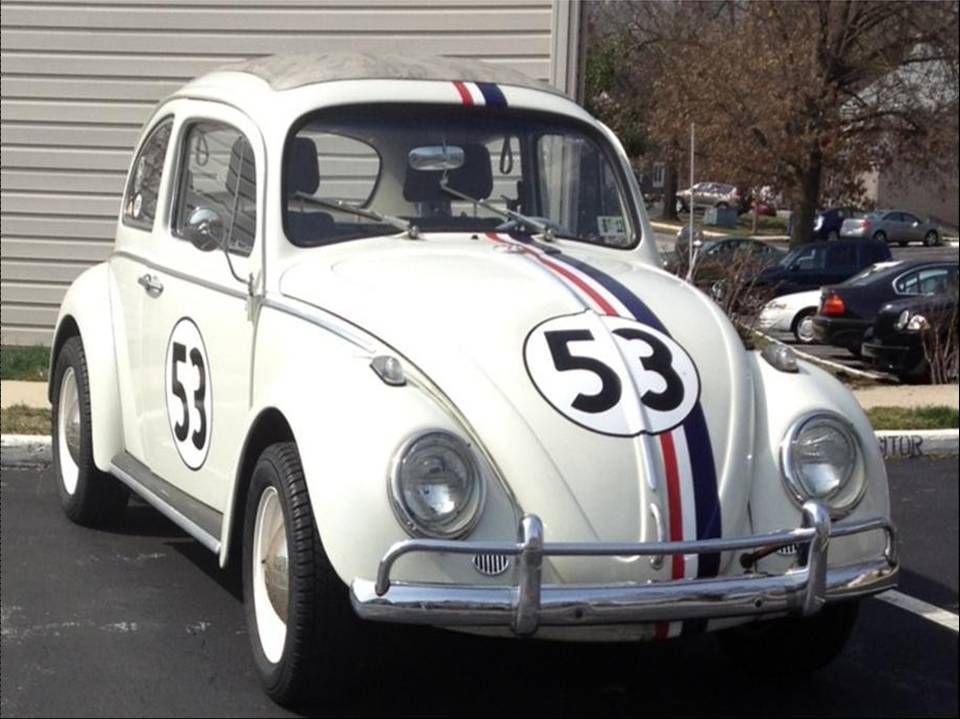
11. **1968 Volkswagen Beetle**Ted Bundy remains one of history’s most chilling serial killers, whose seemingly innocuous demeanor masked unspeakable depravity. His choice of vehicle, a beige 1968 Volkswagen Beetle, became as infamous as his crimes, not for its speed or luxury, but for a chilling modification that spoke volumes about his dark intentions. Bundy brought a sinister new meaning to personalization, removing the passenger seat of his Beetle to more effectively conceal and transport the bodies of his victims.
His horrific killing spree commenced in January 1974, maintaining a terrifying pace of approximately one victim per month until his luck ran out. In August 1975, Bundy was pulled over in his modified Beetle, sparking immediate suspicion among law enforcement. The absence of the passenger seat, coupled with the discovery of incriminating items like a crowbar, icepick, gloves, handcuffs, and masks fashioned from pantyhose, painted a disturbing picture of his activities.
Despite initial challenges in pinning crimes directly on Bundy, authorities eventually made a crucial breakthrough after he sold the car to a teenager, who subsequently cleaned it. A more thorough search of the vehicle yielded hairs that forensic analysis matched to some of his victims, cementing the Beetle’s role as a silent witness to his heinous acts. This discovery was pivotal in unraveling the extent of his crimes.
Bundy’s cunning nature led to two audacious escapes from custody, during which he continued his murder spree, even managing to acquire another stolen VW Beetle to facilitate his monstrous acts. However, justice eventually prevailed, and he was finally caught and executed. His original 1968 Volkswagen Beetle, with its ghastly customization, remains a stark and enduring symbol of one of America’s most terrifying criminal minds, forever etched into the dark annals of automotive history.
Car Model Information: 2012 Volkswagen Beetle 2.5L
Sp: uk
Name: Volkswagen Type 1,”Beetle”
Caption: 1965–1966 Volkswagen Käfer
Manufacturer: Volkswagen
Alt: A front-three quarters view of a pale-yellow Volkswagen Käfer. It features 165/80R15 tires, which shod 15×4. 5″ silver, circular wheels. The Käfer features a beetle-like body, and its window is open. The picture is taken with much greenery in the background, and the photo was edited to give it a more warmer tone.
Aka: List of names for the Volkswagen Type 1
Assembly: #Markets and assembly
Designer: Ferdinand Porsche
Class: Small family car
BodyStyle: Sedan (automobile),convertible
Production: 1938–2003,21,529,464 produced
Successor: Volkswagen Golf Mk1,Volkswagen Gol#First generation (Typ30, 1980),Volkswagen New Beetle
Layout: Rear-engine, rear-wheel-drive layout
Engine: Petrol,Volkswagen air-cooled engine,1192 cc H4,1285 cc H4,1493 cc H4,1584 cc H4
Transmission: manual transmission,Saxomat,Autostick
Wheelbase: convert
Length: convert
Width: convert
Height: 1500 mm
Abbr: on
Weight: convert
Categories: 1940s cars, 1950s cars, 1960s cars, 1970s cars, 1980s cars
Summary: The Volkswagen Beetle, officially the Volkswagen Type 1, is a small family car produced by the German company Volkswagen from 1938 to 2003. A global cultural icon known for its bug-like design, the Beetle is widely regarded as one of the most influential cars of the 20th century. Its production period of 65 years is the longest for any single generation of automobile, and its total production of 21.5 million units makes it the most produced car of a single platform in history and the second-highest of all nameplates manufactured in the 20th century.
The Beetle was conceived in the early 1930s. The leader of Nazi Germany, Adolf Hitler, decided there was a need for a people’s car—an inexpensive, simple, mass-produced car—to serve Germany’s new road network, the Reichsautobahn. The German engineer Ferdinand Porsche and his design team began developing and designing the car in the early 1930s, but the fundamental design concept can be attributed to Béla Barényi in 1925, predating Porsche’s claims by almost ten years. The result was the Volkswagen Type 1 and the introduction of the Volkswagen brand. Volkswagen initially slated production for the late 1930s, but the outbreak of war in 1939 meant that production was delayed until the war had ended. The car was originally called the Volkswagen Type 1 and marketed simply as the Volkswagen. It was not until 1968 that it was officially named the “Beetle”.
Volkswagen implemented designations for the Beetle in the 1960s, including 1200, 1300, 1500, 1600, 1302, and 1303. Volkswagen introduced a series of large luxury models throughout the 1960s and 1970s—comprising the Type 3, Type 4 and K70—to supplement the Beetle, but none of these models achieved the level of success that it did. In 1972, it became the best-selling car of all time, a position it retained for nearly three decades. Rapidly changing consumer preferences toward front-wheel drive compact hatchbacks in Europe prompted Volkswagen’s gradual shift away from rear-wheel drive, starting with the Golf in 1974. In the late 1970s and ’80s, Japanese automakers dominated some markets around the world, which contributed to the Beetle’s declining popularity.
The Beetle remains one of the best-selling cars of all time and is the first to sell over 20 million units. Over its lifespan, its design remained consistent, yet Volkswagen implemented over 78,000 incremental updates. These modifications were often subtle, involving minor alterations to its exterior, interior, colours, and lighting. Some more noteworthy changes included the introduction of new engines, models and systems, such as improved technology or comfort. The Beetle maintains a substantial cultural influence and is regarded as one of the most iconic vehicles in automotive history; its success largely influenced the way automobiles are designed and marketed, and propelled Volkswagen’s introduction of a Golf-based series of vehicles.
Get more information about: Volkswagen Beetle
Buying a high-performing used car >>>
Brand: Volkswagen Model: Beetle
Price: $13,985 Mileage: 27,389 mi.
Read more about: From Classic Grandeur to Modern Marvels: The 14 Most Iconic Car Designs Shaping Automotive History, According to Experts
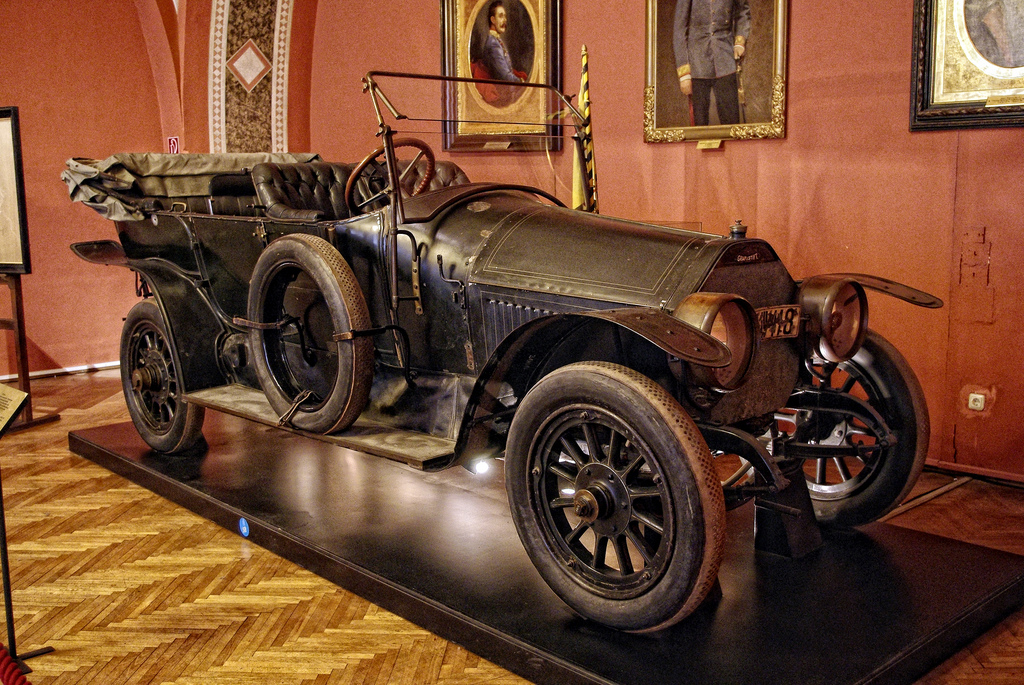
12. **1911 Gräf & Stift Double Phaeton**In the annals of automotive history, few vehicles can claim to have played such a pivotal, albeit unwitting, role in altering the course of global events as the 1911 Gräf & Stift Double Phaeton. This open-top touring car became the stage for a moment of monumental tragedy: the assassination of Archduke Franz Ferdinand, an act that reverberated across continents and ignited the powder keg of World War I, unleashing unprecedented human suffering.
Adding a layer of chilling premonition to the fateful day, the assassination by Gavrilo Princip was not the first attempt on the Archduke’s life. Earlier, a grenade had been hurled at the motorcade, but it bounced harmlessly under another car, failing to achieve its deadly purpose. In a moment of defiant exasperation, Ferdinand famously exclaimed, “So you welcome your guests with bombs!” unaware of the far more devastating fate awaiting him.
Tragically, the Archduke’s motorcade, with the Gräf & Stift at its forefront, made a wrong turn, bringing them directly into Princip’s path. The fatal shots struck Ferdinand in the jugular and his wife, Sophie, in the abdomen. His poignant last words, “Don’t die darling, live for the children,” underscored the immediate, personal tragedy unfolding within the car’s plush interior. Despite desperate efforts, Sophie succumbed to her wounds on the way to the hospital, sealing the couple’s tragic fate.
Thus, this elegant 1911 Gräf & Stift Double Phaeton, a luxury automobile of its time, became forever imprinted in history, not for its design or performance, but as the silent, unsuspecting catalyst for the deadliest conflict the world had yet seen. Its very existence is a chilling reminder of how a single event, centered around an automobile, can unleash consequences of unimaginable scale, cementing its place as an iconic symbol of an automotive disaster of global proportions.
Car Model Information: 2022 Buick Envision FWD Avenir
Categories: 1893 establishments in Austria-Hungary, All articles needing additional references, All articles to be expanded, All articles with dead external links, All articles with unsourced statements
Summary: Gräf & Stift was an Austrian manufacturer of automobiles, trucks, buses and trolleybuses, from 1902 until 2001, latterly as a subsidiary of MAN.
It was founded by the brothers Franz, Heinrich and Karl Gräf, and the investor, Wilhelm Stift.
The company was a well-known manufacturer of luxury automobiles, including the Double Phaeton that carried Archduke Franz Ferdinand and his wife, Sophie, when they were assassinated in Sarajevo in June 1914. The car is on display at the Museum of Military History, Vienna.
By the 1930s Gräf & Stift had begun making trucks and buses, and it ceased car manufacturing in 1938. The company merged with Österreichische Automobil Fabriks-AG (ÖAF) in 1971, becoming ÖAF-Gräf & Stift AG, and later the same year was taken over by MAN AG. It continued in business as a subsidiary of MAN, and the Gräf & Stift name remained in use as a MAN brand for the Austrian market and for trolleybuses until 2001, when ÖAF-Gräf & Stift AG was renamed MAN Sonderfahrzeuge AG. It was located in Vienna, and the production facilities continue in use there, but no longer using the Gräf & Stift name.
Get more information about: Gräf & Stift
Buying a high-performing used car >>>
Brand: Gräf & Stift Model: Double Phaeton
Price: $30,988 Mileage: 11,648 mi.
These twelve vehicles, from the glamorous getaway cars of rock legends to the somber final conveyances of royalty and world leaders, stand as powerful reminders that automobiles are more than just machines. They are silent witnesses, unwilling participants, and often, tragic icons in the grand tapestry of human history. Each dent, each modification, each bullet hole tells a compelling story, inviting us to delve deeper into the moments that shaped our world and solidifying their place as the most infamous cars ever to roll off an assembly line.

